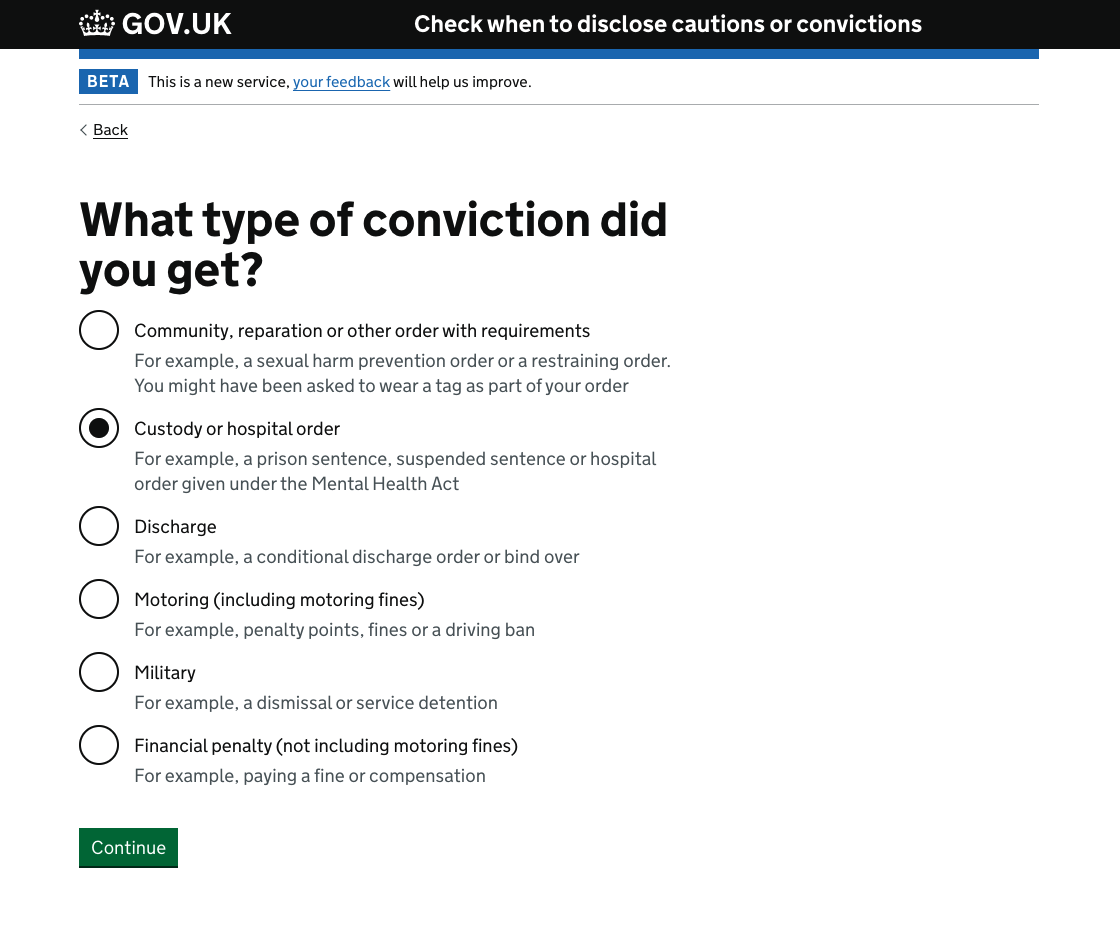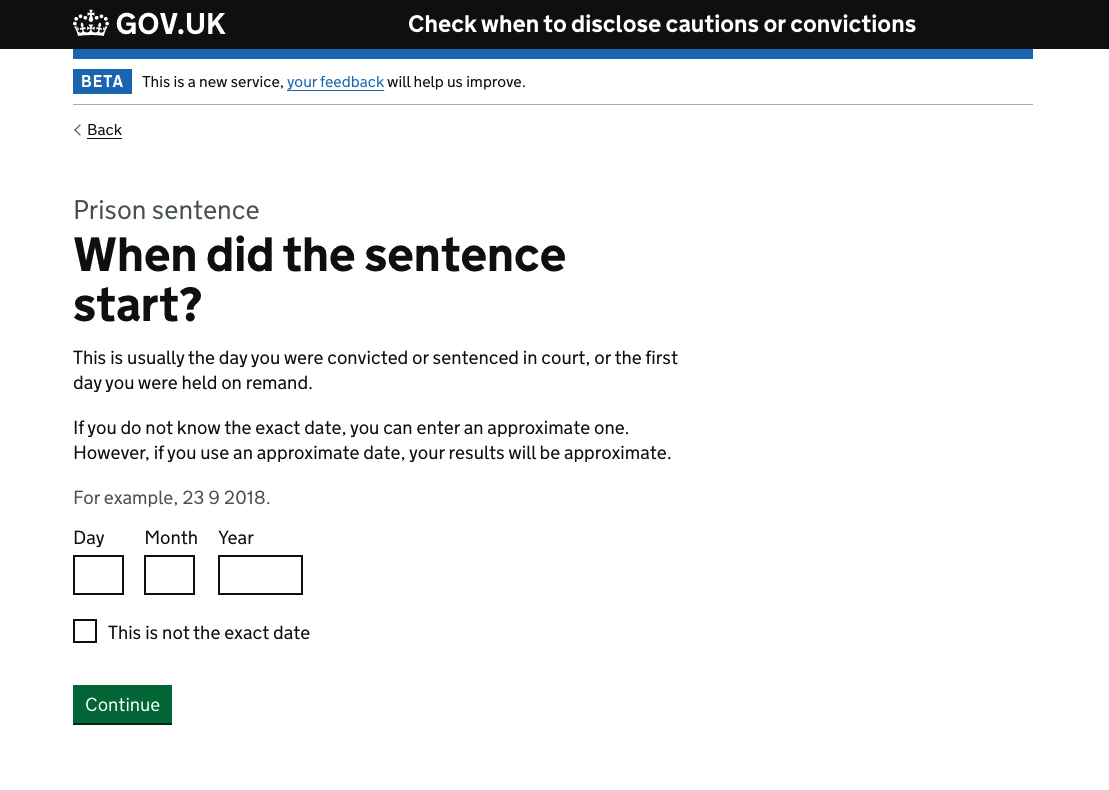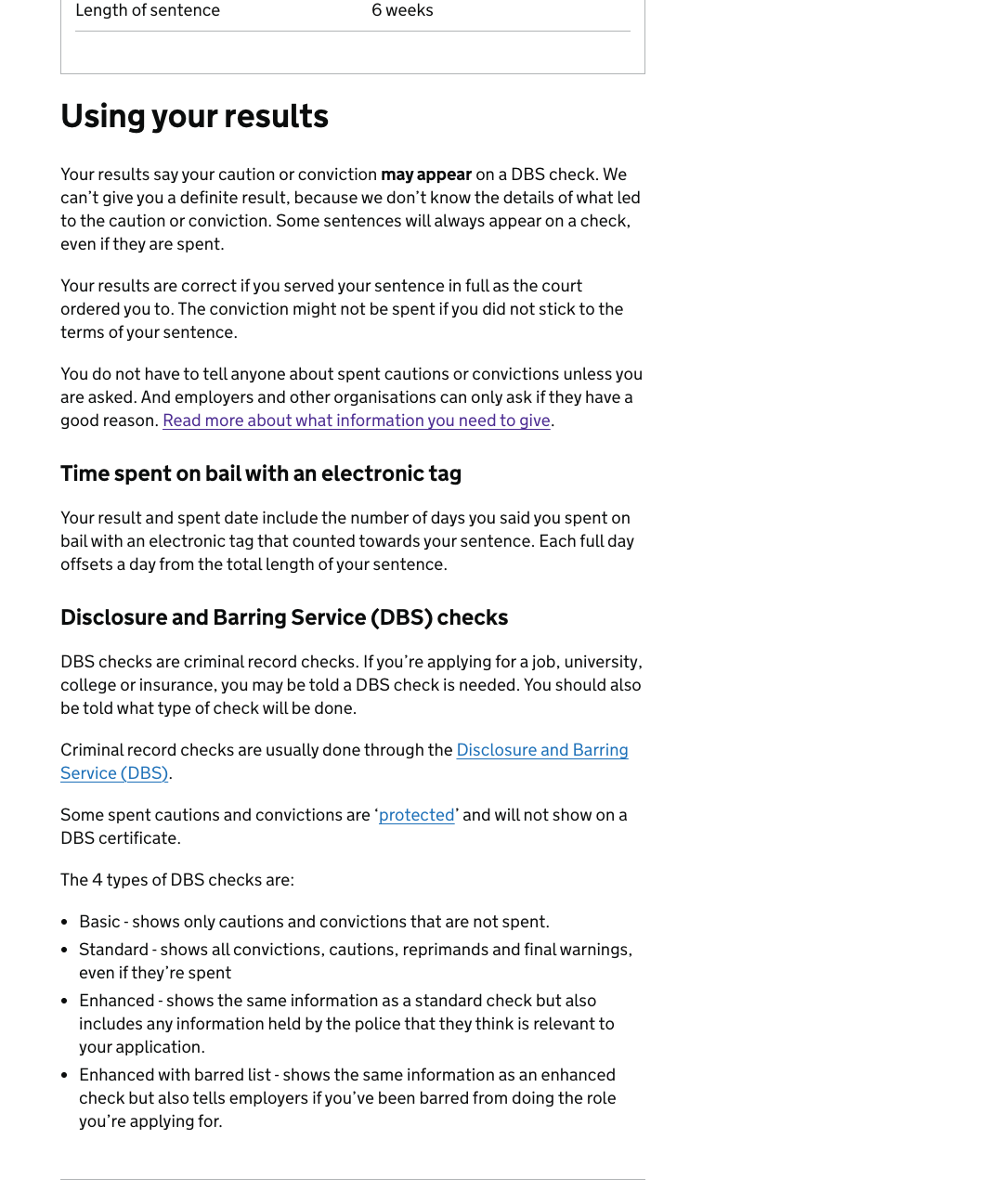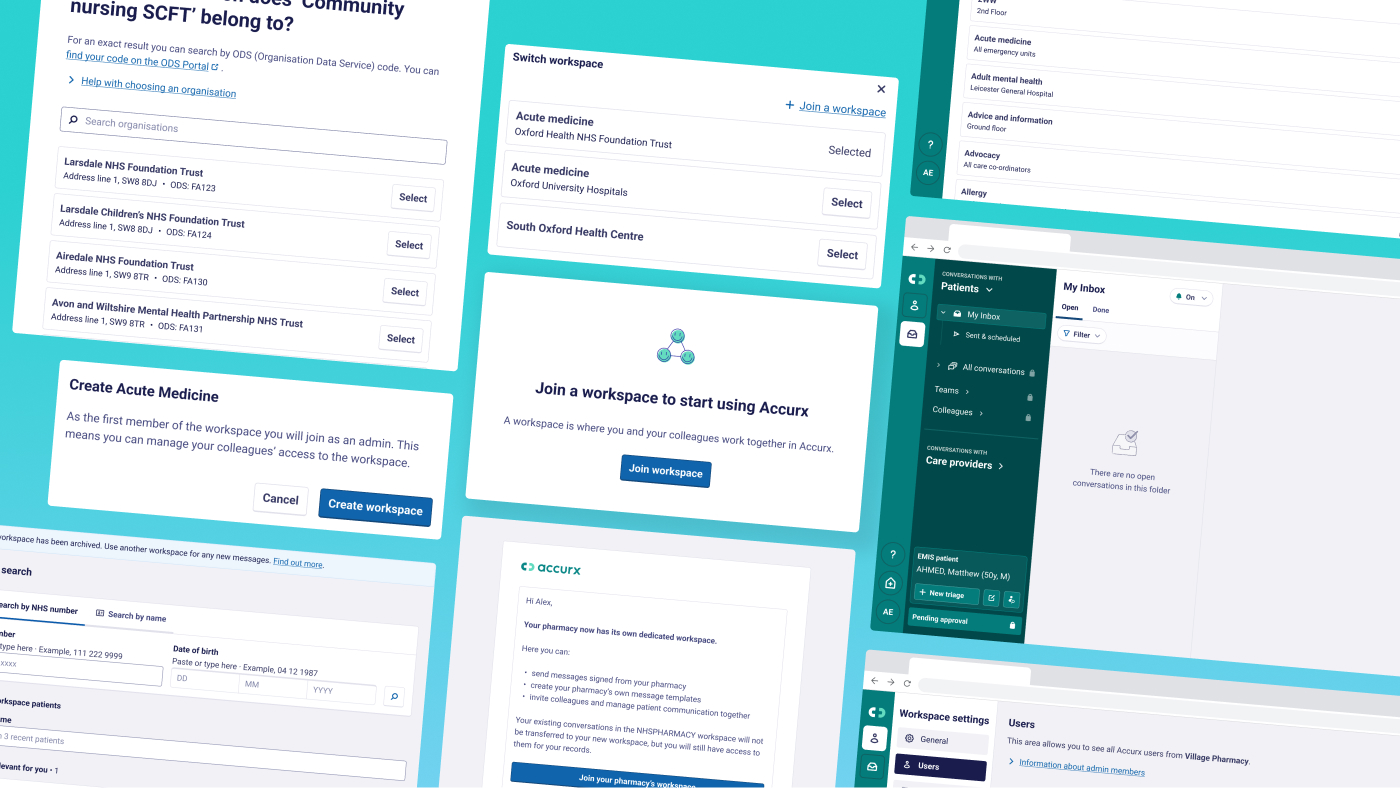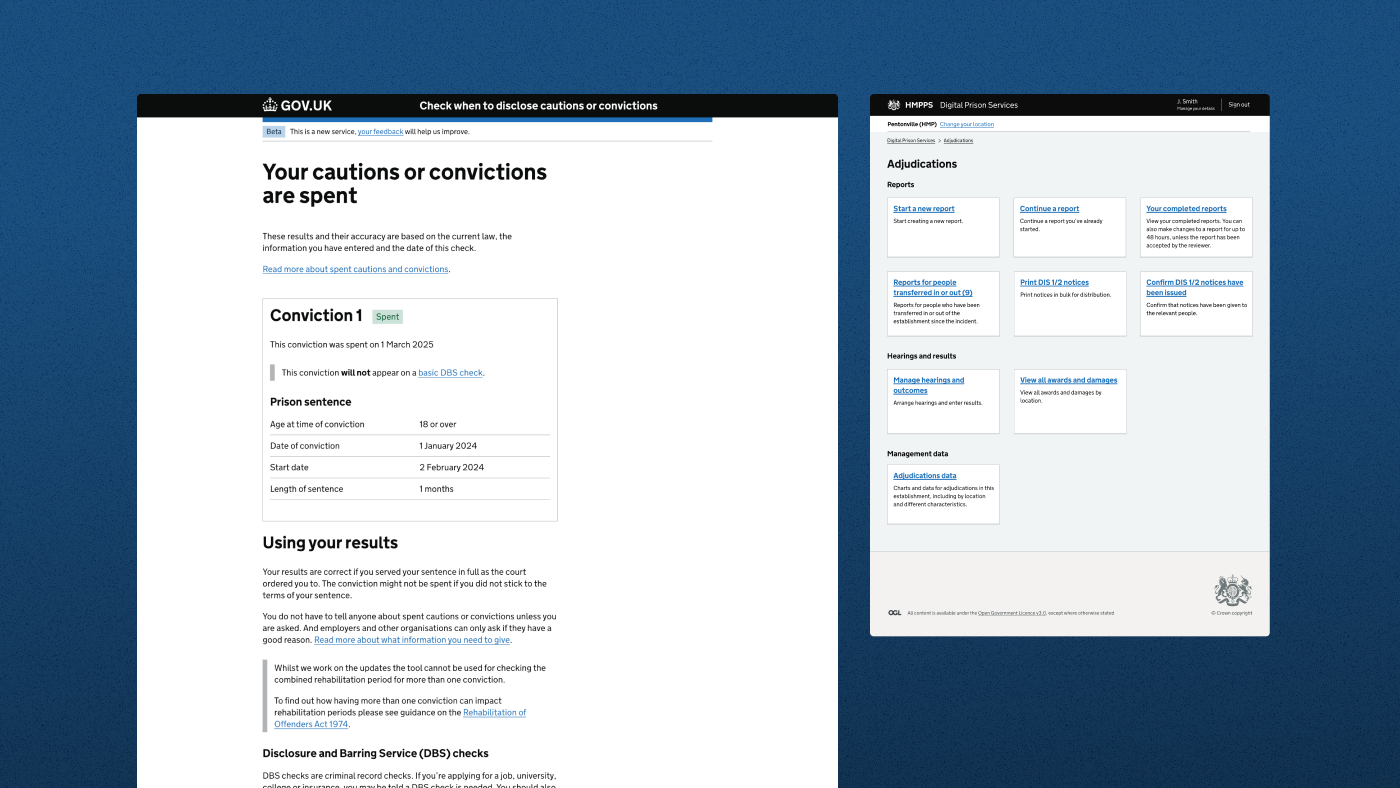Disclosure Checker
- Ministry of Justice
- View project on GOV.UK↗
Quick summary
The challenge here was to create a digital tool to help people understand when they should tell others about their cautions or criminal convictions. I was on this project from designing the MVP through to public beta.
My key outcomes:
- Created new design patterns for summarising complicated information.
- Immediately after launch, user feedback praised the tool's usability and clarity.
- Organisations who work with past offenders were able to save time by cutting equivalent services and processes.
Researching and understanding the legal context
Over 11 million people in the UK have a criminal record. To help people move on with normal life after their caution or conviction, they are not legally required to disclose it when applying for things like jobs or insurance after a certain length of time.
Discovery research found that all of the guidance available on this is difficult to understand, resulting in unnecessary barriers to rehabilitation. The team hypothesised that an online 'calculator' by the MoJ could help solve that problem.
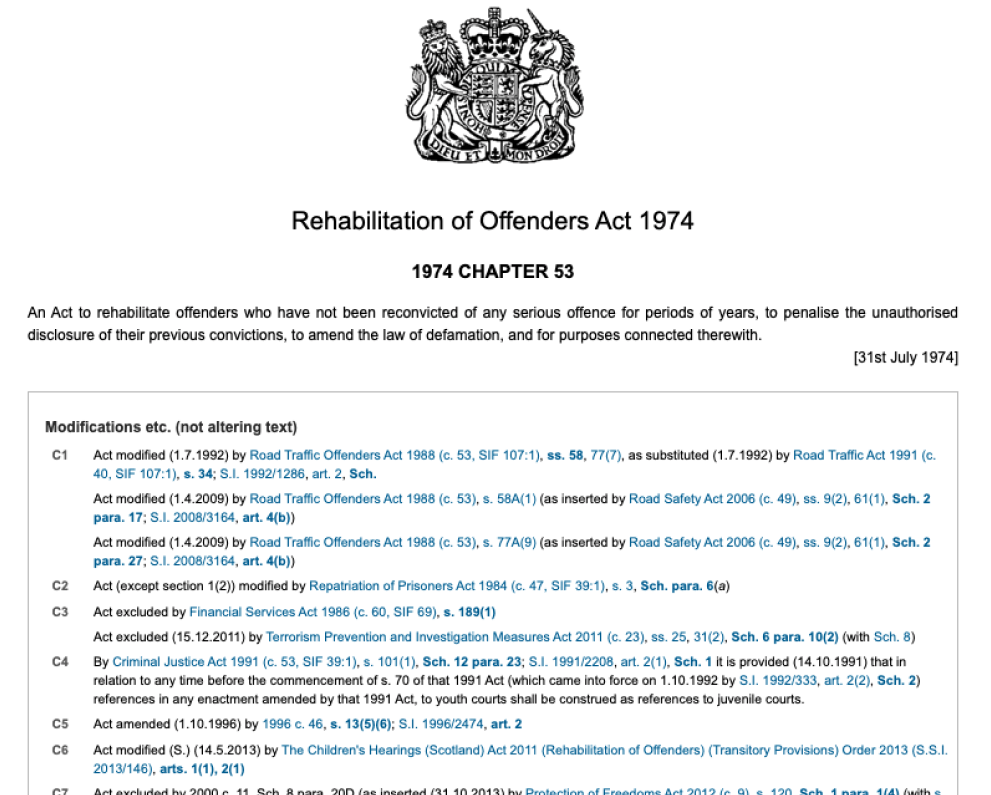
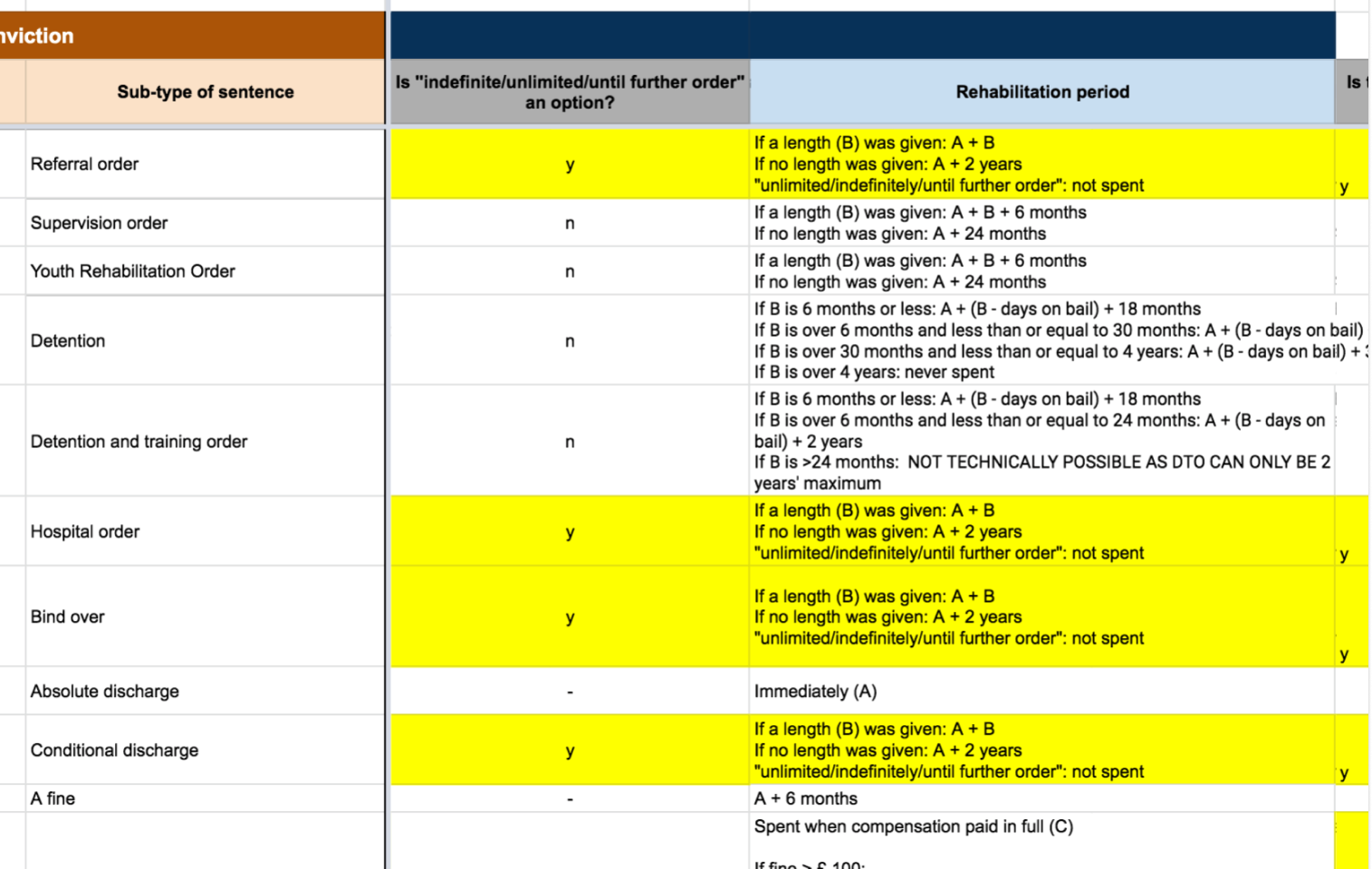
Gaining alignment across government
The main task seemed simple: translate legislation into programmable rules for calculating disclosure dates for different types of caution and conviction.
We quickly found that the rules were not so straightforward. So over a series of workshops, the Product Manager and I worked with legal teams across departments to define the law – and all of its nuances and exceptions – as clearly as possible.
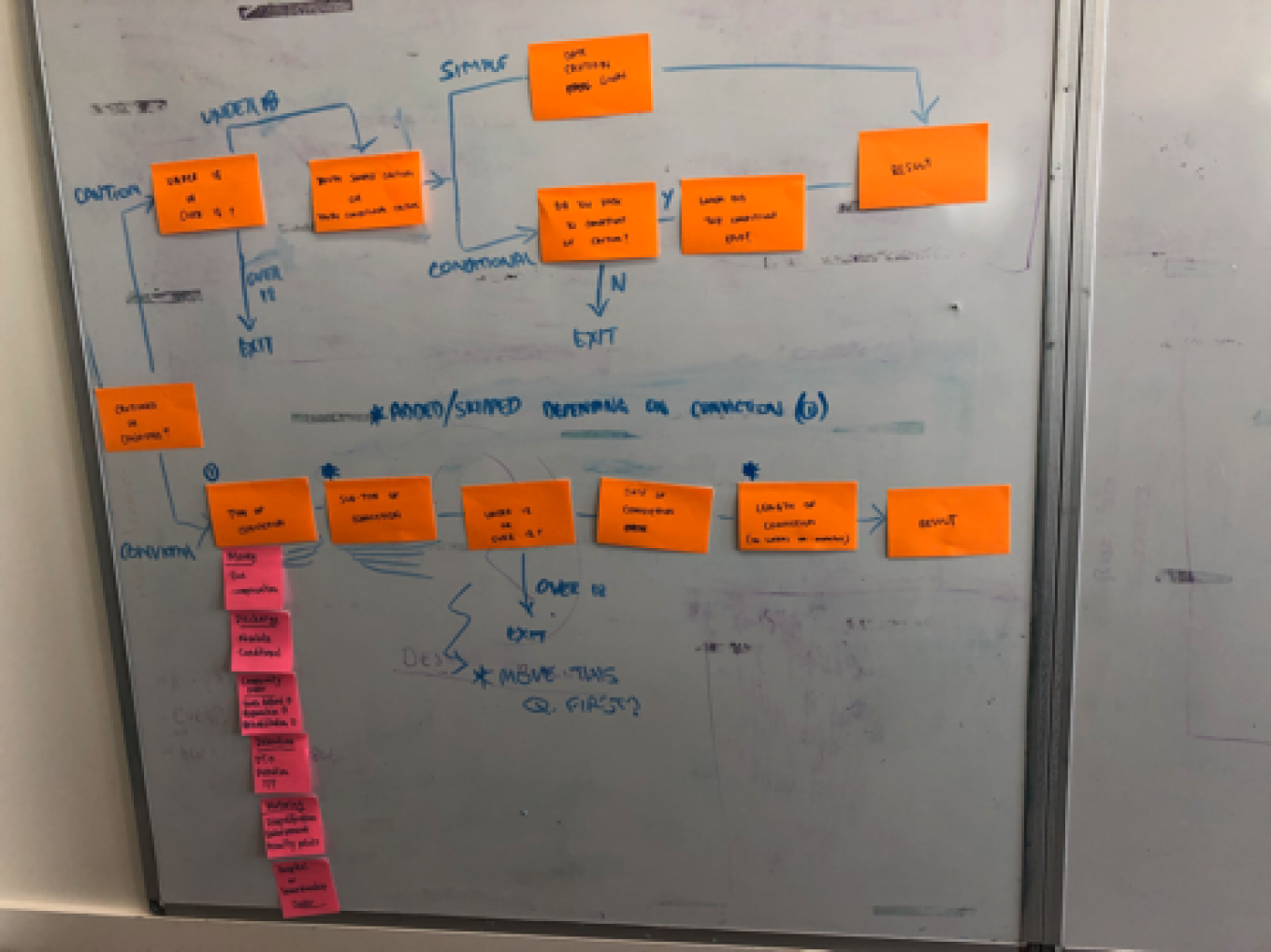
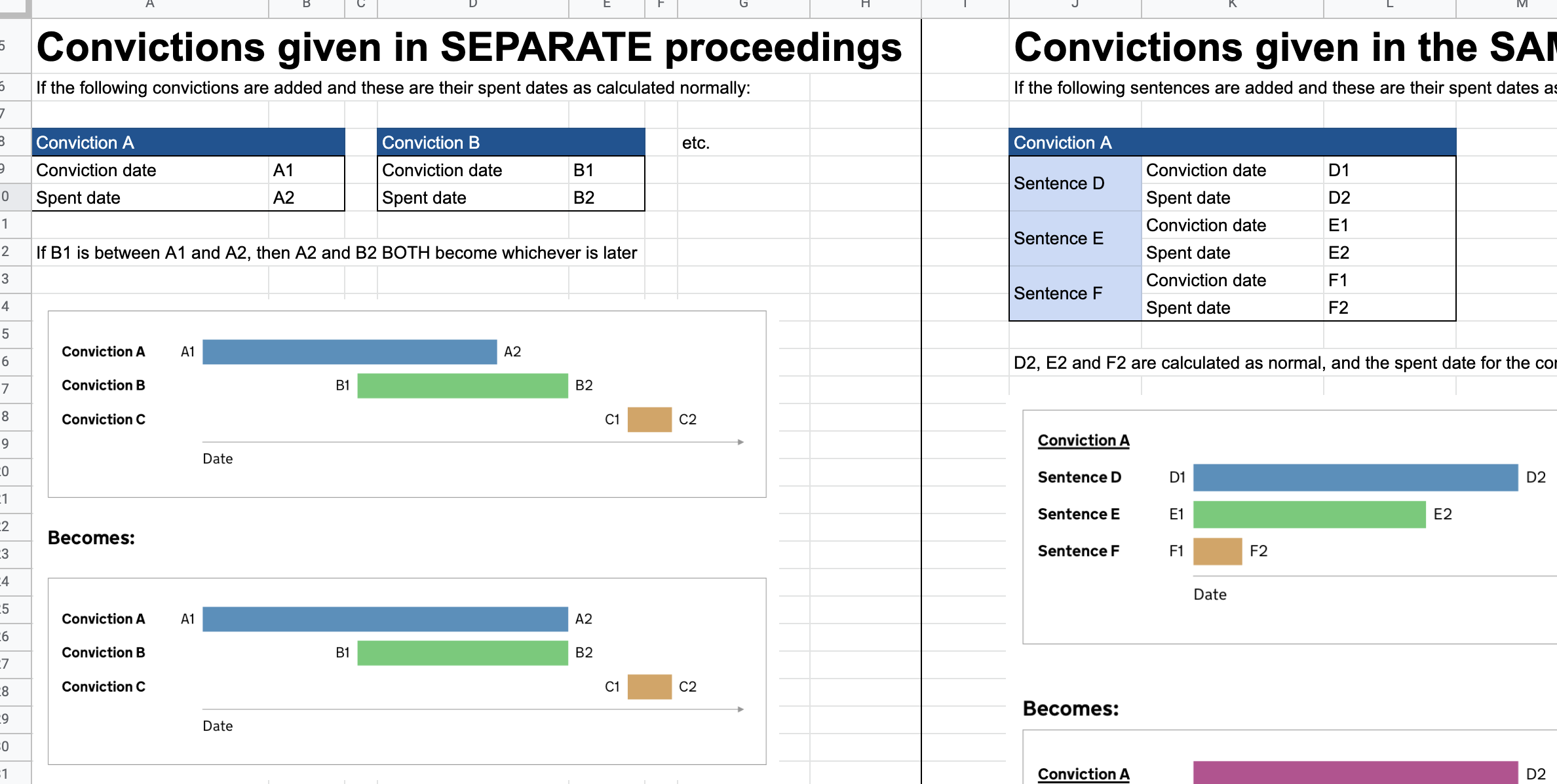

Helping the team to understand users
While understanding the law, I also built our understanding of users to make sure we were meeting their needs. I coded prototypes which we tested with youth offender management teams and adults with past convictions. We also asked generally about their experiences for more context.
These interviews uncovered more user needs beyond the project's orginal scope, and led to further improvements on GOV.UK content.
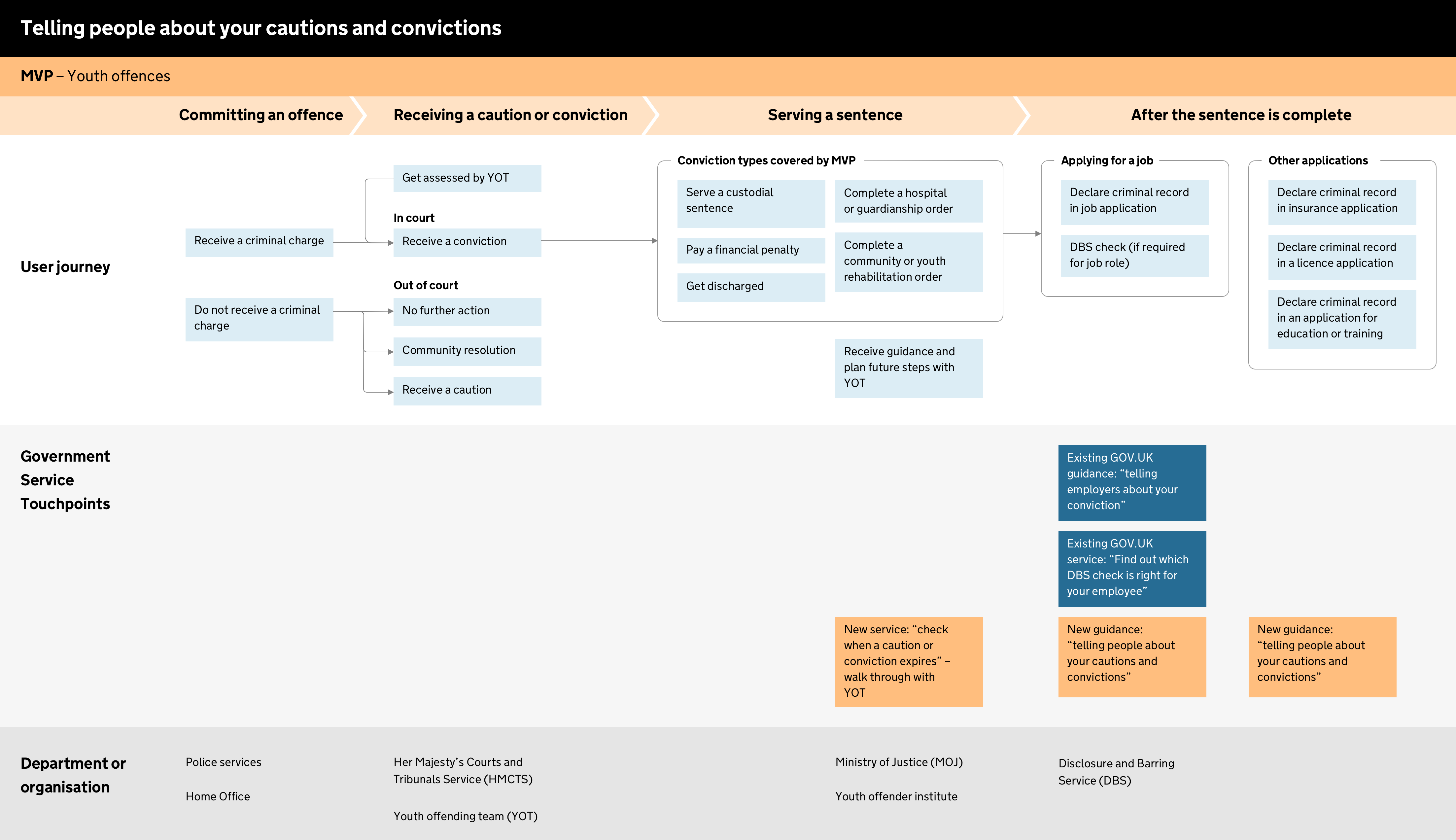
Successfully launching public beta
The disclosure checker is currently live on GOV.UK↗. I left the project shortly after the public release, however initial feedback was consistently positive. Past offenders and charities who work with them praised the tool's usability, clarity and reliability. Below are some example screens from the tool.
